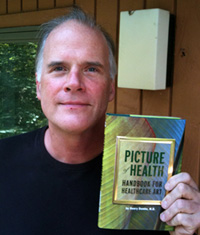I’ve been doing some work on the website of one of our networks and came across a story about what appears to be a big music festival. I exchanged some emails with the news director about linking and adding content from other sources (Google, flickr, YouTube, blogs, Twitter, etc). She expressed some concerns about this.
She, like some many veteran reporters I know, seemed to be coming from that place where you write your story (with audio/video/stills) and it goes into whatever distribution channel your company happens to own: paper, magazine, radio/TV station. That’s where her “audience” finds the story.
And it worked just fine for a long time. But then the web comes along and most of us clapped our hands because we saw it as just one more way to reach “our” audience. A one-way pipe from which they would “consume our content.”
From a recent post (“The Web’s Widening Stream”) by Terry Heaton:
“The “Browse” phase of the Web was its first, and it’s where the name of the desktop application known as the browser originated. The Web was seen as a series of roads leading to destinations, We hopped from site to site — or in the case of AOL, destinations within the site — and everybody was happy. “Visitors” to sites were welcomed through a front door, which became the most valuable online real estate in terms of advertising.
“Search” disrupted the paradigm by allowing people to access documents within a site without going through that front door. We were still visiting sites, though, because that’s “where” the content resided. Search destroyed the value of the home page, and also allowed for advertising adjacent to search results — a way of monetizing content that existed only in link form on the pages of the search. If you wanted to buy ads next to football content, you didn’t need to buy football pages, for example. You could simply buy ads on search results for football.
“Subscribe” blew everything apart, because users no longer had to even visit websites, assuming publishers were willing to make their content available in RSS form. Most major publishers refused to play the game, so media company RSS feeds have generally contained only a sentence or two, thereby forcing users back to the site of origin, where publishers can monetize pages. This irritating practice has kept publishers from exploring revenue possibilities in a truly subscriber-based environment, and it’s the key thing holding back the development of RSS.
But a new paradigm is threatening all of the others and will eventually force all publishers into the unbundled media world. The staggering popularity of social media messaging via Facebook and MySpace “status updates” and, of course, Twitter is creating an information ecosystem that is a series of real-time streams. These streams come in short bursts, but when added to the RSS of Microsoft’s “subscribe” phase of the Web, they form powerful, relevant and meaningful sources of knowledge and information for an increasingly networked world.
Mr. Heaton quotes (and links to) VC John Borthwick who views “streams” as the new metaphor for the web:
In the initial design of the web reading and writing (editing) were given equal consideration – yet for fifteen years the primary metaphor of the web has been pages and reading. The metaphors we used to circumscribe this possibility set were mostly drawn from books and architecture (pages, browser, sites etc.). Most of these metaphors were static and one way. The steam metaphor is fundamentally different. It’s dynamic, it doesn’t live very well within a page and still very much evolving.
A stream. A real time, flowing, dynamic stream of information — that we as users and participants can dip in and out of and whether we participate in them or simply observe are a part of this flow.
And then there is the advertiser:
“Advertising will be another fundamental part of the stream, but the rub for media companies is that advertisers can enter the stream themselves, without the assistance of being attached to media content. This is the inevitable end of a truly unbundled media world.”
If I started this post with a point in mind, I lost it along the way. I think it had something to do with the notion that a reporter –any reporter– could write/produce a story and expect others to find it and read it (and comment on it?) without being connected to them in some synchronous manner.
Or perhaps: All of us can tell the story better than any of us.
Whatever. Read Mr. Heaton’s piece.

